UFO, Setting Sun, Venus,
Herschel 400 Galaxies
Posted: 5 July 2023
|
Open: Tuesday, 4 July 2023, 1815 MST Temperature: 91°F |
Session: 1904 Conditions: Clear, breezy |
Equipment:
12" f/8 LX600 w/StarLock
2" 24mm UWA eyepiece
1.25" 9.7mm eyepiece
Atmospheric Dispersion Corrector
Camera:
D850 DSLR
iPhone 13 Pro Max
1821 MST: LX600 ON, StarLock OFF, High Precision OFF.
Viewed Venus, 102X and 251X + Atmospheric Dispersion Corrector (ADC).
1827 MST: Relaxed on the observatory patio bench.
1844 MST: While I was lying on the bench looking up at the sky I spotted a bright object glinting in the Sun. It would fade out frequently, but it did not move from any wind. I grabbed my D850 DSLR and took this photograph (f/16, 1/250sec, ISO 200, FL 300mm). Focusing, both automatic and manual, was difficult as the only thing visible was the bright, brief, sunglints. The inset shows a magnified view of the UFO, as it must be called since the Flying Object was Unidentified to me. I don't know if it was a balloon or a high flying drone.
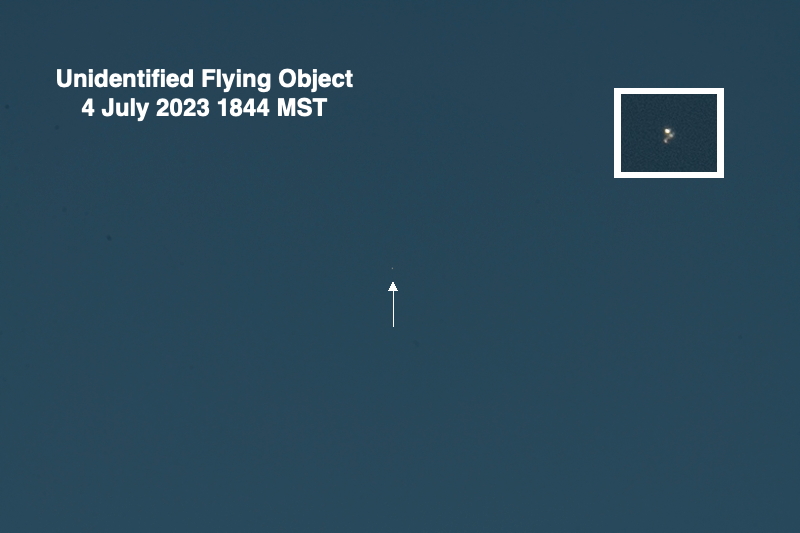
I also tried viewing it with 12x50 binoculars, but it never appeared again after I took the photograph.
1910 MST: Viewed Venus, 12x50 binoculars. The crescent phase was clearly visible in the binoculars.
1911 MST: Back inside the observatory, I viewed Venus again, 251X + ADC.
1920 MST: Back to the bench while waiting for sunset.
1932 MST: Moved to a higher elevation to photograph the setting Sun. Took these photos with the D850 DSLR at various exposure settings, FL 300mm).




1938 MST: Sunset. Calm now.
Back inside the observatory, I took this handheld iPhone 13 Pro Max afocal 251X + ADC image of Venus using NightCap Camera (ISO 34, 1/400sec, 1X lens).
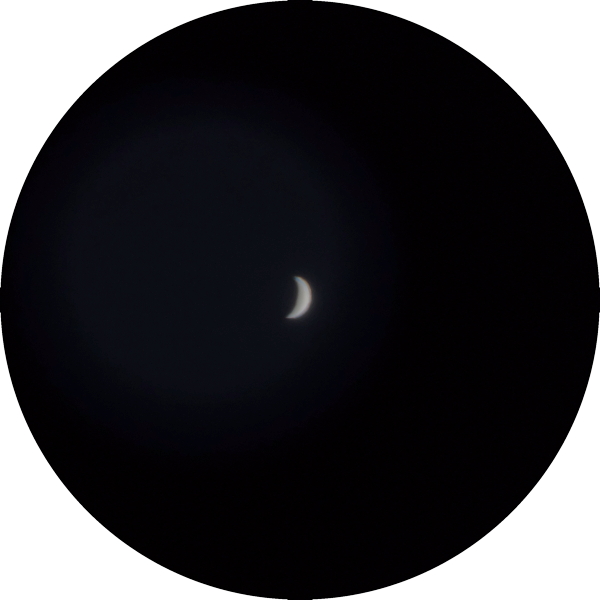
1945 MST: Began relaxing on the bench to watch the stars come out.
2010 MST: Back in the inside, I viewed Venus, 251X + ADC and 102X. I then prepared the D850 DSLR for imaging some Herschel 400 galaxies.
2018 MST: High Precision ON.
Slewed to NGC4856 (galaxy), which would be the first imaging target. It was not yet visible in the twilight sky.
2021 MST: Back to the bench while waiting for the sky to get darker.
2030 MST: Viewed M13 (Great Globular Cluster in Hercules), 12x50 binoculars.
2033 MST: Back at the 12" telescope, I mounted the D850 DSLR at prime focus, focused on the star Spica, and locked the 12" primary mirror. Then slewed to NGC4856.
2041 MST: StarLock ON.
Did the following StarLock autoguided images. The first two exposures were 5 minutes at ISO 3200, the third was 274 seconds at ISO 3200, whereas the rest were 2 minutes at ISO 5000 due to deteriorating autoguiding from bad seeing.
NGC4856 (galaxy)
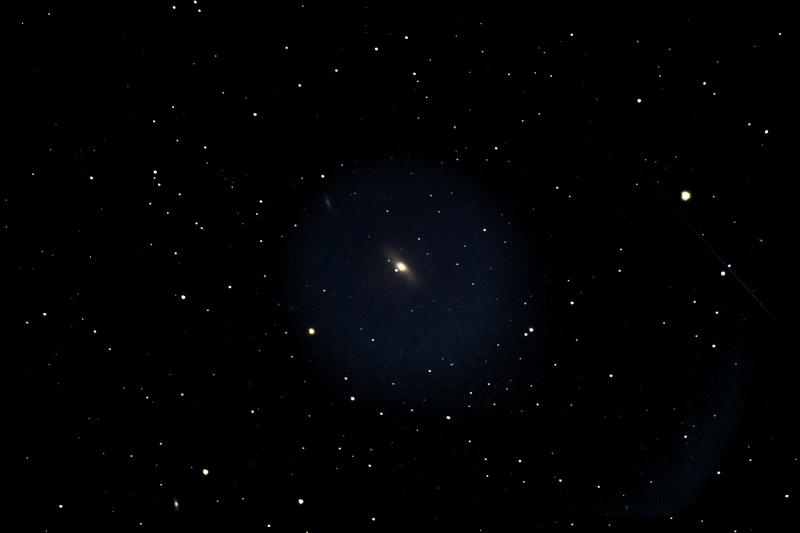
NGC4781 (galaxy)
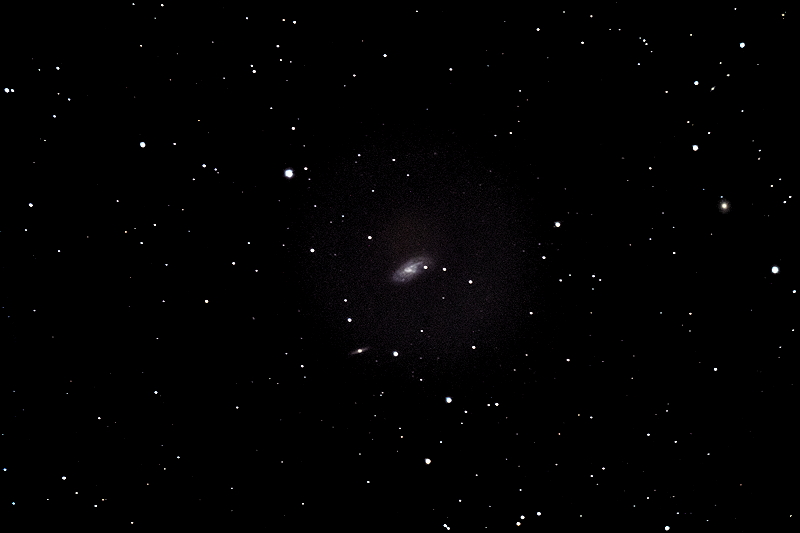
NGC4753 (galaxy)
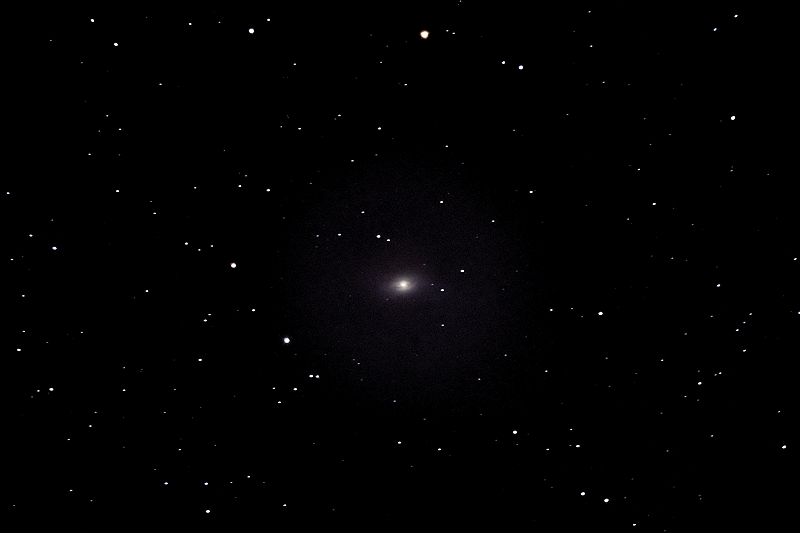
NGC4845 (galaxy)
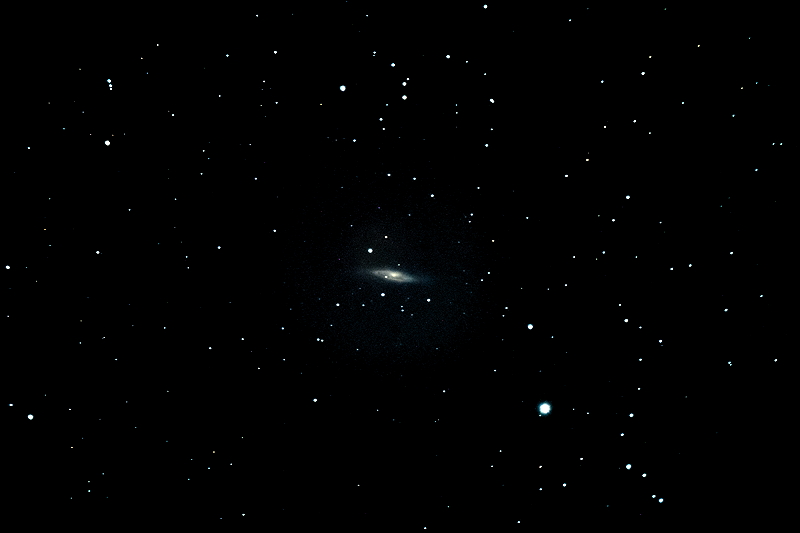
NGC4762 (galaxy)
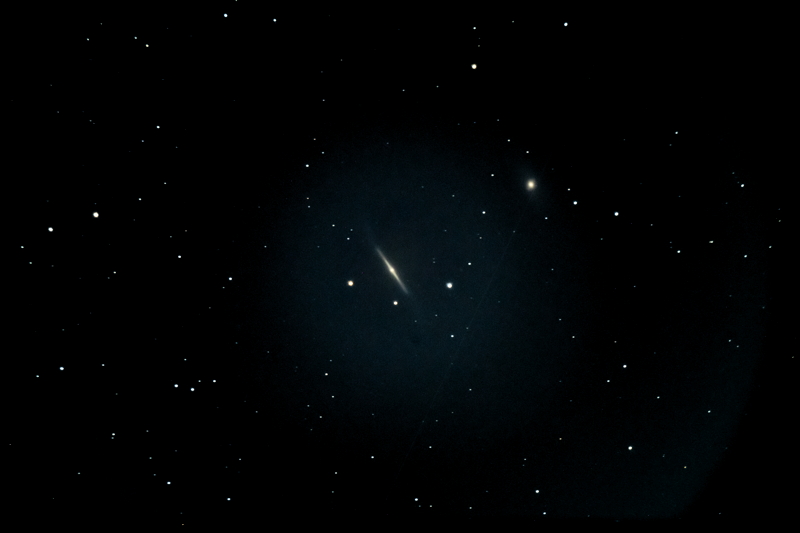
NGC4754 (galaxy)
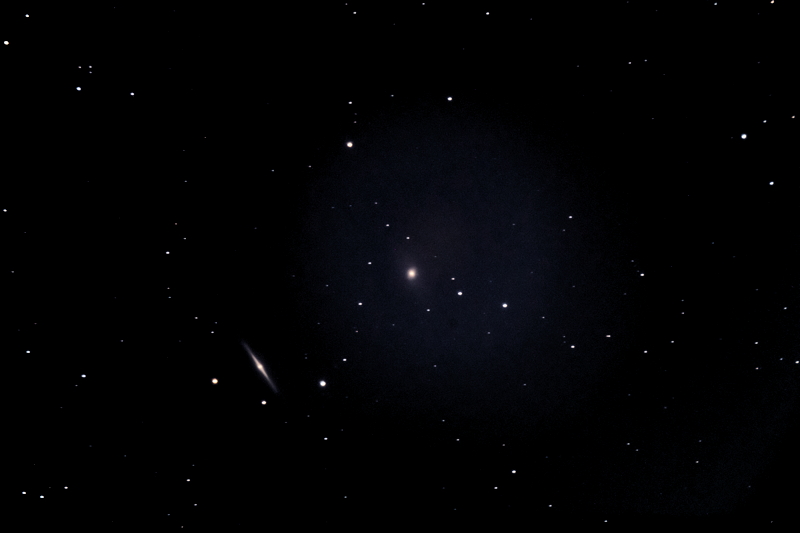
I ended imaging due to the poor seeing. The southeastern sky was brightening from the rising waning gibbous Moon.
Viewed some Herschel 400 galaxies, 102X: NGC4900, NGC4958, and NGC4995. This is my current Herschel 400 Project summary.
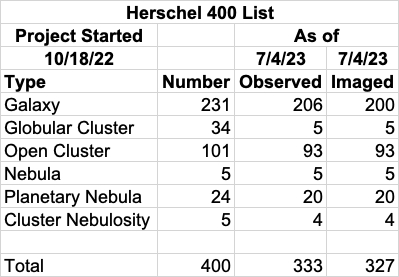
2204 MST: LX600 OFF.
|
Close: Tuesday, 4 July 2023, 2213 MST Temperature: 78°F |
Session Length: 3h 58m Conditions: Clear |
Comments are welcome using Email. Twitter users can use the button below to tweet this report to their followers. Thanks.
Cassiopeia Observatory Home Page
Copyright ©2023 Michael L. Weasner / mweasner@mac.com. Email Etiquette.
URL = http://www.weasner.com/co/Reports/2023/07/05/index.html
